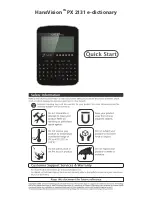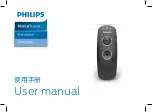
FXAlg #154: Flanger 1 ¥ FXAlg #155: Flanger 2
Algorithm Reference-58
You can set how far each LFO can sweep through the delay line with the excursion controls (Xcurs). The excursion
is the maximum distance an LFO will move from the center of its sweep. The total range of an LFO is twice the
excursion. You set the delay to the center of LFO excursion with the Dly parameters. The excursion and delay
controls both have coarse and fine adjustments. By setting the excursion to zero length, the LFO delay tap becomes
a simple static tap. Note that modifying the delay to the center of LFO excursion will result in a sudden change of
delay length and consequently, a discontinuity in the signal being read from the delay line. This can produce a
characteristic zippering effect. The Dly parameters should be as long as the Xcurs parameters or longer, or else
changing (or modulating) the excursion will force the center of LFO excursion to move, with the resulting signal
discontinuities. The static delay tap does not suffer the zippering problem, and changes to its length will occur
smoothly. You can assign the static delay tap to an FX Mod, and use the source controller to do manual flanging.
Delay for a Single LFO
Consider a simple example where you have an LFO tap signal being subtracted from the static delay tap signal. If
the delays are set such that at certain times both taps are the same length, then both taps have the same signal and
the subtraction produces a null or zero output. The effect is most pronounced when the static tap is set at one of the
ends of the LFO excursion where the LFO tap motion is the slowest. This is the classic Thru-Zero flanger effect.
Adding other LFO taps to the mix increases the complexity of the final sound, and obtaining a true Thru-Zero effect
may take some careful setting of delays and LFO phases.
The flanger has a Wet/Dry control as well, which can further add complexity to the output as the dry signal is
added to various delayed wet components for more comb filtering.
When using more than one LFO, you can set up the phase relationships between each of the LFOs. The LFOs of the
left channel and those of the right channel will be set up in the same phase relationship except that you may offset
the phases of the right channel as a group relative to the left channel (L/R Phase). L/R Phase is the only control
which treats left and right channels differently and has a significant effect on the stereo image. If you have tempo
set to the system tempo, the phases will maintain their synchronization with the tempo clock. At the beat of the
tempo clock, a phase set to 0
°
will be at the center of the LFO excursion and moving away from the delay input.
Regenerative feedback has been incorporated in order to produce a more intense resonant effect. The signal is fed
back is from the first LFO delay tap (LFO1), and has its own level control (Fdbk Level). In-phase spectral
components arriving at the summer add together, introducing a series of resonant peaks in the frequency spectrum
between the notches. The amplitude of these peaks depends on the degree of feedback, and they can be made very
resonant.
Cross-coupling (Xcouple) allows the signals of the right and left channels to be mixed or swapped. The cross-
coupling is placed after the summation of the feedback to the input signal. When feedback and cross-coupling are
turned up, you will get a ping-pong effect between right and left channels.
A lowpass filter (HF Damping) right before the input to the delay line is effective in emulating the classic sounds of
older analog flangers with their limited bandwidths (typically 5-6kHz).
As stated earlier, it is the movement of the notches created in the frequency spectrum that give the flanger its unique
Tap Dly
Delay Input
Shortest
Delay
Longest
Delay
Center
of LFO
LFO Xcurs
LFO Xcurs
Range of LFO
















































